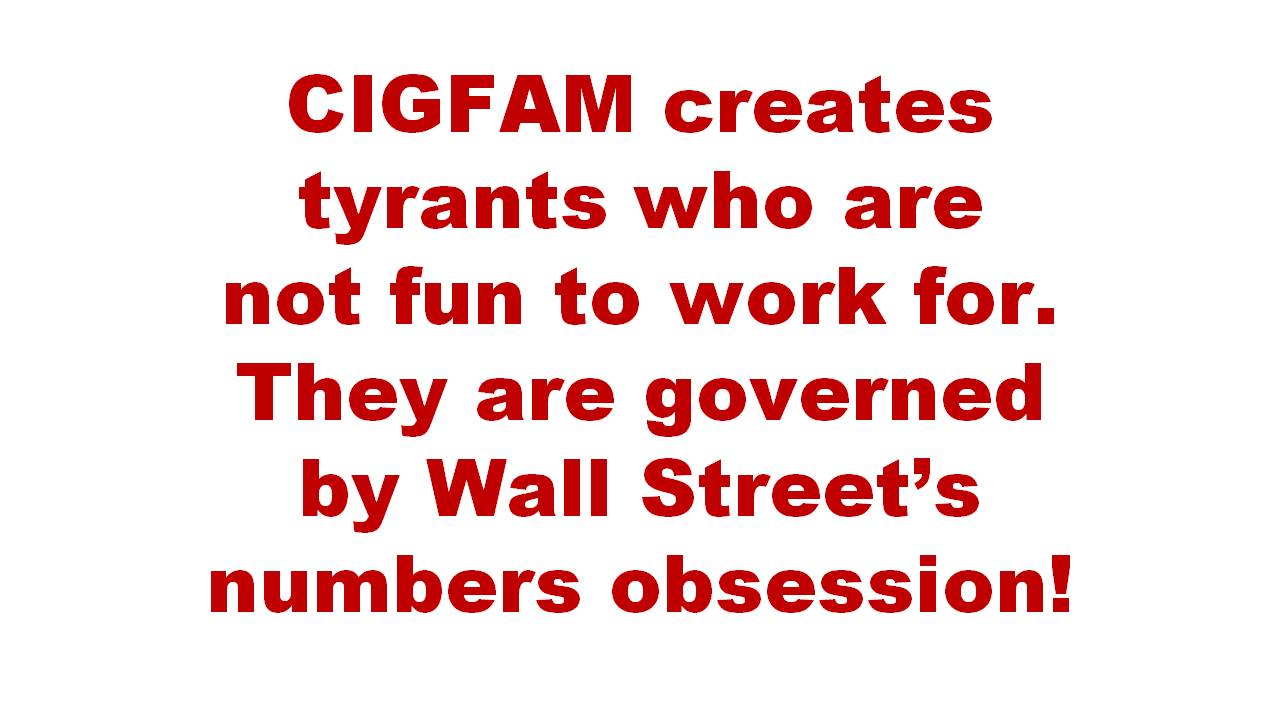by Peter A. Arthur-Smith
“If the only tool you have is a hammer, you tend to see every problem as a nail.” Abraham Maslow, founder of modern motivational theory.

Our conventional motivating mode is through the acronym CIGFAM; where C= Competition, I= Incentives; G= Goals; F= Fear; A= Accountability, and M= Measurement. These enshrine the modern management playbook and are used systemically to compel people to conform and perform as required. They are the cornerstone of organizational cultures where you “Have To.”
I regularly talk with team leaders/supervisors and executives about their day-to-day people-performance issues and difficulties in “making” their people “step-up.” These same team leaders/supervisors and executives regularly experience trepidation that their people will let them down and not help them accomplish the required “numbers.” Their people often miss deadlines and not meet their commitments. With CIGFAM it’s constant nudging, because the moment you take your foot off the gas pedal staff begin to slacken off. It shouldn’t be this way.
As a starting point, however, we have, of course, to start with the question, “Are those deadlines or commitments realistic in the first place?” At times they are not and require realistic adjustment; hopefully with the assistance of the team members in question. Is this true in your case?
The second question is: Do we require our team members to perform constantly at the same intensity in order to meet desired objectives?” If this is the case we are asking for trouble, since people are not built to work at maximum intensity all the time. That’s why in the sports world they take quarter or half time breaks and end the game within a realistic timeframe. That’s why in schools, kids take breaks between classes. And that’s why in enlightened firms they take regular coffee and lunch breaks. People need time to recoup, unwind to a certain degree, and utilize such opportunities to chat with colleagues or think about other issues. As the saying goes: ‘All work and no play makes Johnnie/Sheila a dull boy/girl.’
The third question is: Can we create an environment where people “want to” rather than “have to” accomplish something? With the element of compulsion in the latter expectation, there’s always a high risk of burn-out or internal resistance to being pushed along or not working at one’s best. With a “want to” culture there’s every reason for people to perform to their maximum ability most of the time. This where the enlightened leadership acronym PEACAM comes into play.
PEACAM is where P= compelling Purpose and E= sense of Equality – being consulted rather than talked down to. It’s also where A= feelings of Achievement/Accomplishment and C= team Camaraderie. Finally, it embraces A= role Autonomy-empowerment, and M= gaining Mastery in one’s work domain. These are the six fundamental intrinsic/internal people motivators that can keep burning all day and all night if the right circumstances exist. Such attributes are almost limitless when treated with respect. But yet we keep pushing the CIGFAM factors, which burn people out if overly used.
True leaders know how to create “want to” cultures. They know how engage people in a positive purpose. They also know how to treat their team members with respect and draw upon their ideas for achieving certain milestones. Enlightened leaders also position situations so their people feel a sense of achievement or accomplishment on a regular basis. Furthermore, ELs give their people solid, agreed guidelines and resources, so they enjoy the autonomy and empowerment to move ahead. Finally, ELs encourage their team members to acquire the necessary know-how to optimize their performance. With PEACAM your team members will pretty well always meet or surpass their chosen objectives without burning themselves out…you don’t have to worry about taking your foot off the gas pedal!
The required know-how is gained through team education, team meetings, challenging experiences and outside collaborators when required. PEACAM is the engine that brings optimum results on a regular basis, not CIGFAM…despite all your conditioning in this mode so far. CIGFAM may well be used in emergency or crisis situations or to provide occasional balance to PEACAM, although hopefully with optimal PEACAM you won’t encounter that too often.
Wall Street creates a crisis situation five days a week to achieve certain stock prices, although executives who allow themselves to be governed by its numbers obsession are not usually fun to work for. They are often tyrants who make their people’s lives miserable…often with an overload of CIGFAM and high people churn. Does that sound like someone you wish to work with or “for”?
(NOTE: The author has an online survey which can indicate where your team stands on PEACAM.)
